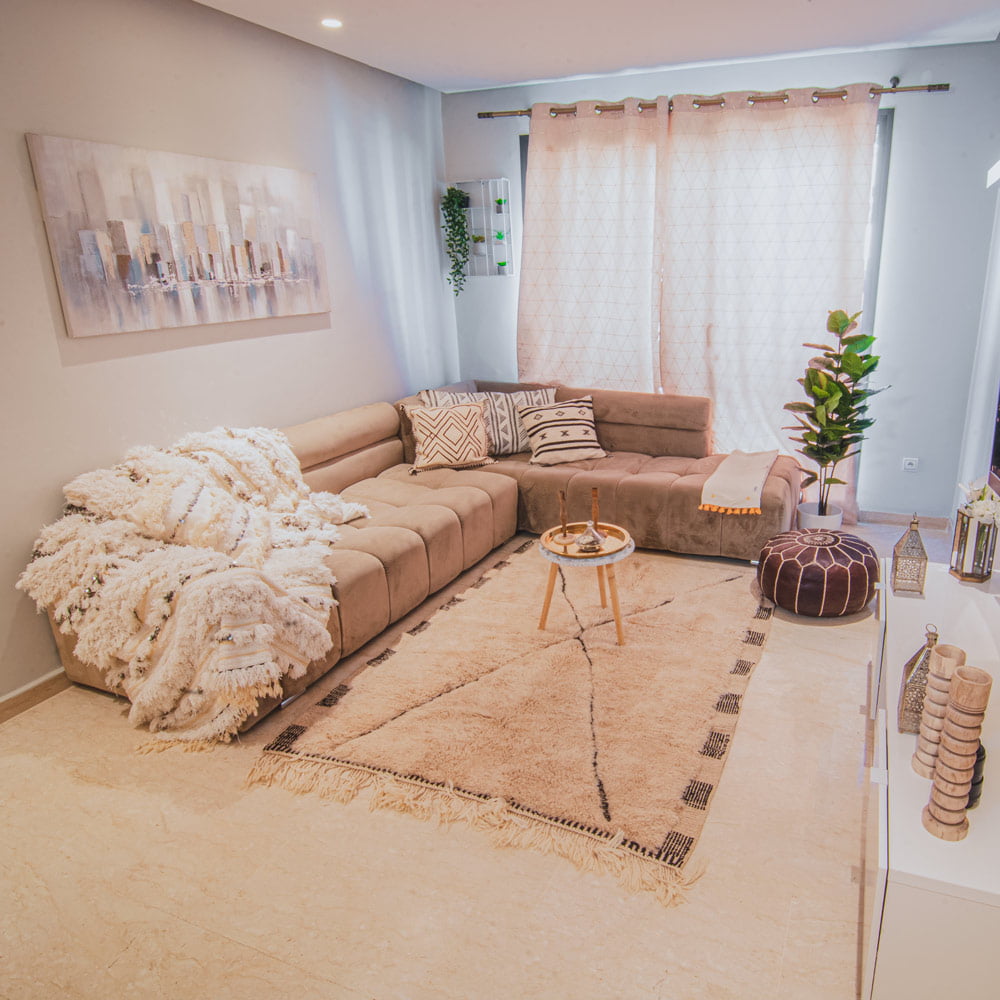Moroccan handicrafts are famous all over the world for their beauty and exceptional quality. Among the different types of Moroccan handicrafts, handmade carpets hold a special place. These carpets are not only beautiful, but they are also unique because of their handmade process that uses traditional techniques handed down from generation to generation.


Moroccan carpets are made in different regions of the country, each with its own characteristic patterns and colors. Berber rugs, also known as Beni Ourain rugs, are probably the most famous. They are made in the mountainous Rif region, where Berber women use local sheep’s wool to weave the rugs on hand looms.
The process of making Moroccan rugs is very laborious and often takes months or even years. It all starts with the selection of high quality wools that will be used to weave the carpet. Berber women are very skilled at dyeing wool with natural dyes to get the colors they want;
Next, the dyed wools are stretched on wooden handlooms, and Berber women begin weaving the carpet using intricate weaving techniques that involve tight knots and loops. The weaving process is slow and laborious, but it results in rugs of exceptional quality and unmatched durability.
Once the carpet is woven, it undergoes a finishing process that involves brushing, washing, and drying. Ce processus est essentiel pour éliminer les poils excédentaires et les débris qui se sont accumulés pendant le processus de tissage. Le résultat final est un tapis magnifique et unique qui est prêt à être utilisé pour décorer n’importe quelle pièce.
Because of their beauty and quality, Moroccan carpets are highly prized throughout the world. They are often used to decorate Moroccan style homes, but they are also very popular in modern interiors. In addition to their beauty, Moroccan rugs are also very durable and can last for decades, even generations, if properly cared for.
